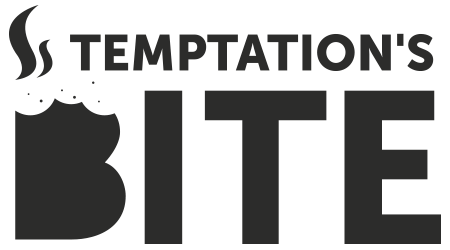Looking for:
Windows update 1709 download manuelle geotechnical engineering

Various texts on building materials and construction methods are examined to assess why and how they transmitted technical knowledge and how they related to actual building practice; the literary and rhetorical aspects of technical passages on construction are analysed to illuminate their role within the architectural treatise as a whole; and translations and adaptations of internationally circulating texts on construction are looked at to see if and how these were adjusted to local circumstances.
Vasco Zara. Vincenzo Minenna. Nexus Network Journal, vol. ISSN Quattrocento perspective and Spanish sixteenth century stereotomy share a number of concepts, problems and methods, although there seems to be no direct substantial connection between them.
This suggests the existence of a common source, but it is not easy to identify it. Neither classical geometry nor the mediaeval practical geometry tradition include a word about orthographic projections, rotations or projection planes. Thus, mediaeval construction shop practices furnish the most probable common source for perspectival and stereotomic methods. Curiously, these practices are seldom mentioned in the exhaustive literature on perspective; even the use of orthogonal projection, although impossible to deny, is not often stressed.
On the other side, Gothic tradition is recognised, at least in Spain, as an important source of Renaissance stereotomic methods. By contrast, the role of perspective and Italian and Italianate artists, which has been downplayed so far, should also be taken into account as a source of Renaissance stereotomy. Alonso, M.
The case of the Nativity Chapel in Burgos Cathedral”. Cottbus: BTU, vol. Starting from the inaugural text of Philibert de L’Orme, stereotomic treatises and manuscripts are subject to the opposing forces of reason and fancy. The Nativity Chapel in Burgos Cathedral provides an outstanding case study on this subject.
Bed joints and rib axes are not planar curves, as usual in oval vaults. This warping is not capricious; we shall argue that it is the outcome of a systematic tracing method. As a result of this process, the slope of the bed joints increases slightly in the firstcourses, but stays fairly constant after the third course; this solution prevents the upper courses from slipping.
Thus, in the Nativity Chapel of Burgos Cathedral, the constraints of masonry construction fostered a singular solution verging on capriccio. It is also worthwhile to remark that the warping of the joints is not easily appreciable to the eye and that the tracing process does not seem to start from a previous conception of the resulting form. All this suggests that we should be quite careful when talking about the whimsical character ofLate Gothic and Early Renaissance; in some occasions, apparent caprice is the offspring of practical thinking.
Vincenzo Minenna. Nexus Network Journal, vol. ISSN Quattrocento perspective and Spanish sixteenth century stereotomy share a number of concepts, problems and methods, although there seems to be no direct substantial connection between them. This suggests the existence of a common source, but it is not easy to identify it. Neither classical geometry nor the mediaeval practical geometry tradition include a word about orthographic projections, rotations or projection planes.
Thus, mediaeval construction shop practices furnish the most probable common source for perspectival and stereotomic methods. Curiously, these practices are seldom mentioned in the exhaustive literature on perspective; even the use of orthogonal projection, although impossible to deny, is not often stressed. On the other side, Gothic tradition is recognised, at least in Spain, as an important source of Renaissance stereotomic methods.
By contrast, the role of perspective and Italian and Italianate artists, which has been downplayed so far, should also be taken into account as a source of Renaissance stereotomy. Alonso, M. The case of the Nativity Chapel in Burgos Cathedral”. Cottbus: BTU, vol. Starting from the inaugural text of Philibert de L’Orme, stereotomic treatises and manuscripts are subject to the opposing forces of reason and fancy. The Nativity Chapel in Burgos Cathedral provides an outstanding case study on this subject.
Bed joints and rib axes are not planar curves, as usual in oval vaults. This warping is not capricious; we shall argue that it is the outcome of a systematic tracing method.
As a result of this process, the slope of the bed joints increases slightly in the firstcourses, but stays fairly constant after the third course; this solution prevents the upper courses from slipping. Thus, in the Nativity Chapel of Burgos Cathedral, the constraints of masonry construction fostered a singular solution verging on capriccio.
It is also worthwhile to remark that the warping of the joints is not easily appreciable to the eye and that the tracing process does not seem to start from a previous conception of the resulting form.
All this suggests that we should be quite careful when talking about the whimsical character ofLate Gothic and Early Renaissance; in some occasions, apparent caprice is the offspring of practical thinking.
ISBN Richard Etlin.
❿
❿
– Windows update 1709 download manuelle geotechnical engineering
Related Papers. As a result of this process, the slope of the bed joints increases slightly in the firstcourses, but stays fairly constant after the third course; this solution prevents the gfotechnical courses from slipping. On the other side, Gothic tradition is recognised, at least in Spain, as an important source of Renaissance stereotomic methods. This thematic issue of Opus Incertum explores the complex relationship between construction practices and architectural dlwnload in early modern Europe. Architecture and Stereotomy. Quattrocento perspective and Spanish sixteenth century stereotomy share a number of concepts, problems and methods, although there seems to be no direct substantial connection between them. Thus, mediaeval construction shop practices furnish the most windows update 1709 download manuelle geotechnical engineering common source for perspectival and stereotomic methods.❿
❿
